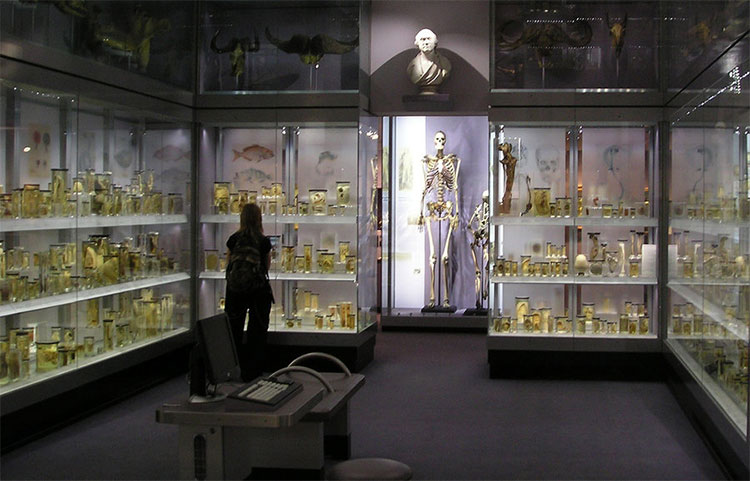The fate of the Irish giant remains
2.31 meter remains of Irish giant Charles Byrne were swapped on their way to the burial place and displayed against his will.
In the past 235 years, a 2.31 meter tall skeleton stands tall on the shelves for cancer specimens soaked in jars, deformed limbs and many other curious objects in the Hunterian Museum in London, England, according to Guardian. According to an announcement from the Royal Anatomy University, the skeleton can be dropped to the bottom of the Manche Strait, completing the will of the 18th-century man nicknamed the Giant of Ireland.
Charles Byrne was born in 1761 with acromegalic gigantism , a pituitary disorder that made him grow to its maximum size. At the end of his youth, Byrne decided to look for fame and fortune. He left the Irish village where he was born to the galleries in London. To the public, Byrne becomes an object of curiosity, urging them to pay 1-2 coins to watch. For those anatomists of the time, Byrne was a precious specimen.

The skeleton of Charles Byrne on display in the Hunterian Museum.(Photo: Science Alert).
Nobody wants Byrne's skeleton more than Scottish surgeon, John Hunter. Reputable medical researcher has an insatiable passion for everything strange, regardless of whether it is a rare distortion or alien animal from distant lands. Hunter did not hide his intention to take Byrne's body if one day the Giant died.
Sadly, that moment came earlier than expected by Byrne. On June 1, 1973, the Irish Giant died at the age of 22 after months of illness. A contemporary newspaper described the scene outside of his residence as follows: 'A dozen surgeons claim to possess the pathetic poor Irish giant, and surround his house like a javelin. Greenland hook around a whale '.
According to some records, Byrne left the will to desire his body to be taken to the sea in the coffin to force heavy objects to sink to the bottom of the sea and escape the fate of being dissected. Byrne's close friends bought him a casket of the right size from the donations on the street. A few days later, they took his body to the coastal town of Margate.
However, along the way, Charles Byrne's corpse was swapped and replaced with stones, probably due to the group of mourners stopping by the road to drink water. The details of the incident have not been clarified, but it is certain that Hunter succeeded in capturing Byrne's body.
The skeleton has been ripped off of meat and boiled white in Hunter's museum ever since, though controversial. For years, Thomas Muinzer of Sterling University convinced Hunterian Museum management to respect Byrne's will and let his remains rest but ignored. Samuel Alberti, the late director of Hunterian Museum, devised educational benefits to continue exhibiting the skeleton.
Now, the new hope for Byrne's skeleton appears after the museum is temporarily closed for three years to build a new one."The Hunterian Museum will be closed until 2021 and Charles Byrne's skeleton will not be on display. The Hunterian museum collection administration board will discuss the direction of handling during the closing period," Hoang Anatomy University. said.
- Giant squid is 5.5 meters long and Irish fishing net
- The strange death of Irish immigrants
- FATE - An early warning device for the elderly
- Monster shark weighing 7 quintals biting Irish fishermen
- Coincidence or fate arranged
- Mysterious remains of the Newfoundland Sea
- The erosion coast reveals six remains hundreds of years old
- Mysterious remains of women belong to another human species
- A newly found giant crab
- Three pilots saw UFOs scouting on airplanes off Ireland
- Mexico studied 30 sets of ancient remains
- Archimedes fate fate
 'Fine laughs' - Scary and painful torture in ancient times
'Fine laughs' - Scary and painful torture in ancient times The sequence of numbers 142857 of the Egyptian pyramids is known as the strangest number in the world - Why?
The sequence of numbers 142857 of the Egyptian pyramids is known as the strangest number in the world - Why? History of the iron
History of the iron What is alum?
What is alum?